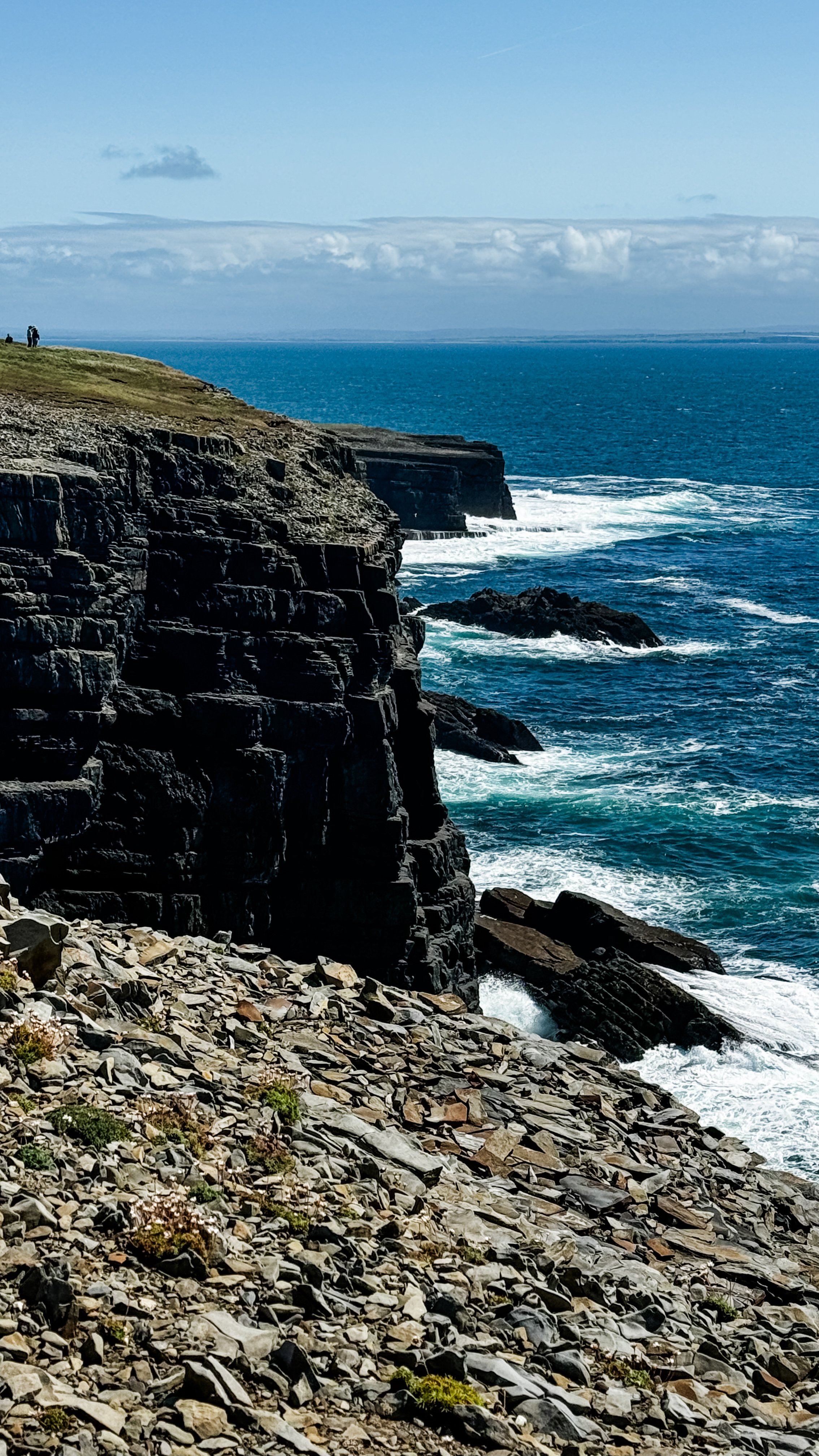The Loop Head Lighthouse sits at the southern tip of the peninsula that makes up County Clare, at the mouth of what becomes the Shannon River. We drove down from Lahinch on a spectacular day with blue skies and warm sunshine.
For a small fee you can enter the lighthouse grounds which has a small museum display, coffee shop and toilet facilities. You can pay a small amount extra to climb to the top of the lighthouse but we opted not to. Instead we did a walk beyond the walls of the light grounds to the edge of the cliffs.
The cliffs are extremely high, with no fencing at all. I’ll admit, as much as it is breathtakingly beautiful and exhilarating to see the coastline stretch out either side and the Atlantic Ocean stretch out to the horizon, it’s also quite anxiety inducing. Our girls are really sensible and cautious and they behaved themselves really well, but it’s hard to escape intrusive thoughts of someone going over the edge. Braino was surprising brave, being memorised by the crashing waves below. May times I felt compelled to tell him to get back from the edge. We even saw a local man with a fishing rod and tackle box climb down to a precarious ledge to fish over the edge. We could see all the way to the mountains of the Dingle Peninsula to the south, it was really magical.
We stopped off at the nearby Bridges of Ross, which is another section of the coastline that has unique naturally formed arched bridges that cross parts of the cliff. You can see in last photo on the right Braino and the girls siting on top of the bridge section over the water below.




























































